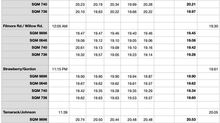Predicting an Eclipse With Paper Plates
- Chuck Bueter
- Mar 10, 2024
- 2 min read
Updated: Jul 8, 2024
To predict a solar eclipse one has to consider the multiple lunar movements around the earth with respect to the sun. You can demonstrate that cosmic dance with a new Moon's Many Motions paper plate activity that shows regression of the lunar nodes.
A model of the moon's orbit around the sun is inclined, showing how the moon at the end of the stick is below the line (string) between the sun and earth at the February 9, 2024, new moon position. The entire inclined plate with combined earth-moon revolves around the sun counterclockwise, as seen from above, once every year.

With new moon at the nodes, which are defined by the slits, the earth-moon-sun align and an eclipse occurs. You can swing through the April 8 new moon at the slit so the string then goes under the inclined plate (5 degree inclination is exaggerated here) yet still toward the sun. The next few new moons above the string indicate that is the ascending node.

Six months later, on October 2 with the new moon at the opposite node, the string again aligns with the earth-moon-sun. You get another solar eclipse, this time an annular eclipse (annular because the moon is near apogee, further away from earth).
The inclined plate representing the moon's orbit turns about 20 degrees every year, yielding a full circle in just over 18 years. Thus you can demonstrate how the Saros cycle is part of eclipse predictions, too.
The background plate relies on an illustration from page 90 of Guy Ottewell's Astronomical Calendar 2024, used with permission.
An existing a Moon Finder plate with a single slit (to get past the string secured under earth) can slip over the top of the background plate to open the moon phases dialogue for this activity.

The activity works better when you put it all in motion, but I don't have time to video and edit the sequence so I simply uploaded text and some images. Please let me know if you have corrections or comments for this inaugural Regression of the Nodes paper plate activity. There are other factors contributing to eclipse predictions, such as the eccentricity of the orbits, that are not included in this summary of the moon's motions.
More sun-related paper plate activities are at https://www.nightwise.org/single-post/paper-plate-activities-for-the-sun.









































